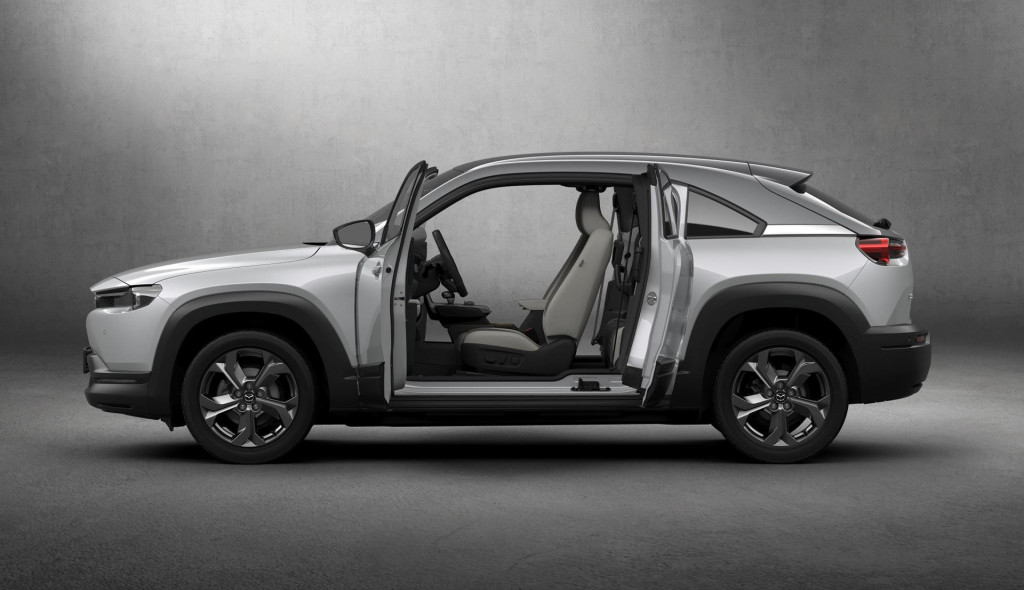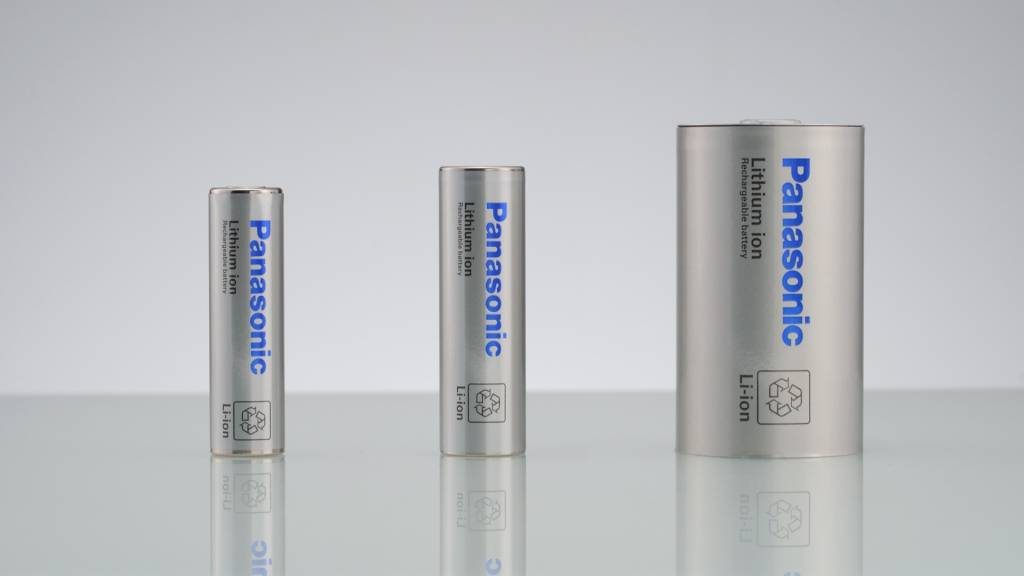Mazda has begun discussions with Panasonic for supply of cylindrical battery cells for future EVs, the two companies announced Wednesday.
The goal of the discussions is to hammer out an agreement for Panasonic to supply cells from factories in Japan and North America for use by Mazda in EVs “scheduled to be launched in the latter half of the 2020 decade,” according to a press release. The companies are just talking however, with no firm agreement in place.
No further details were given, but cells supplied from North America would likely come from a new factory in De Soto, Kansas, which has been claimed to be the largest battery plant in the world.
Panasonic cylindrical EV battery cells
The relationship between Panasonic and Mazda dates back to 2012, when Panasonic supplied batteries for the Mazda Demio EV, which was leased to customers in Japan on a limited basis. A collaboration at this stage could be more far-reaching.
Aside from the California-only, limited-volume MX-30, Mazda has no EVs in its U.S. lineup. That’s set to change with a clean-sheet EV platform coming in the second half of this decade, forming the basis for multiple models to be launched between 2025 and 2030. Mazda said in 2021 that it expects its entire lineup to have some degree of electrification by 2030, with EVs making up 25% of that total.
Hybrids, including the recently launched 2024 Mazda CX-90 plug-in hybrid and a planned CX-50 hybrid, will bridge the gap until EVs based on the planned dedicated platform arrive.

2022 Mazda MX-30
Mazda has indicated that longer-range EVs aren’t the future, but the use of cylindrical cells could yield efficiency gains. It’s the chosen cell format of Lucid and Tesla—the two range-leading EV brands. Tesla is Panasonic’s main EV battery customer; Lucid announced in 2022 that it would begin using Panasonic cells as well.
Established automakers have been slower to adopt cylindrical cells, though. BMW confirmed a shift to this format for future EVs last year, and General Motors is reportedly mulling cylindrical cells for some applications.
Mazda tested electric versus hybrid powertrains years ago, and concluded that drivers preferred the characteristics of EVs. Instead of taking that as a cue to speed up development of EVs, Mazda has mostly focused on efforts to improve the efficiency of combustion engines with interesting, but ultimately unsuccessful, projects like the SkyActiv-X homogeneous charge compression ignition (HCCI) engine and SkyActiv-D diesel.

Well done! This article provides a lot of value.
buy lasuna tablets – buy lasuna purchase himcolin for sale
buy besifloxacin – cheap sildamax without prescription buy sildamax tablets
order probalan online cheap – probenecid usa tegretol cost
buy neurontin 800mg – azulfidine price azulfidine 500mg uk
purchase colospa online cheap – arcoxia 60mg for sale buy cilostazol 100mg generic
order generic rumalaya – shallaki tablet order elavil 10mg pills
order voltaren without prescription – aspirin generic buy aspirin tablets
mestinon 60 mg for sale – azathioprine 25mg pills brand azathioprine 25mg
baclofen online order – buy generic piroxicam online cheap piroxicam 20mg
buy generic periactin for sale – buy tizanidine for sale tizanidine 2mg ca
buy artane without a prescription – order artane sale voltaren gel online buy
omnicef pills – purchase cefdinir without prescription buy generic clindamycin online
acticin cream – order tretinoin gel online tretinoin cream over the counter
buy prednisone 20mg generic – buy generic elimite over the counter how to buy zovirax
purchase metronidazole generic – buy cenforce 100mg pills cenforce 100mg without prescription
betamethasone 20 gm ca – betnovate 20 gm creams how to buy benoquin
order augmentin 375mg online – cost amoxiclav order synthroid 100mcg for sale
buy generic clindamycin – order indomethacin 75mg sale indomethacin 50mg brand
eurax for sale – aczone over the counter aczone brand
order losartan generic – buy cozaar pills buy cephalexin 250mg pills
buy zyban 150mg for sale – buy xenical pills for sale buy generic shuddha guggulu
modafinil 200mg drug – purchase promethazine online melatonin price
buy prometrium 200mg – clomiphene cost clomiphene pill
buy fosamax 70mg for sale – provera 10mg sale how to buy medroxyprogesterone
buy dostinex 0.25mg generic – cabgolin buy online buy alesse cheap
yasmin for sale online – buy generic arimidex over the counter arimidex generic
гѓ—гѓ¬гѓ‰гѓ‹гѓі еЂ‹дєєијёе…Ґ гЃЉгЃ™гЃ™г‚Ѓ – г‚ўг‚ュテインの購入 イソトレチノインは薬局で買える?
valif online more – valif pills holiday sinemet cheap
purchase provigil for sale – order modafinil 200mg for sale cheap epivir
buy ivermectin uk – candesartan 16mg generic buy tegretol medication
cheap amoxicillin pill – purchase amoxil sale how to get ipratropium without a prescription
buy azithromycin 500mg online cheap – tindamax 500mg brand order bystolic online
omnacortil 10mg oral – buy generic azithromycin online order progesterone online
order acticlate online cheap – buy glucotrol 5mg pill order glipizide 10mg pills